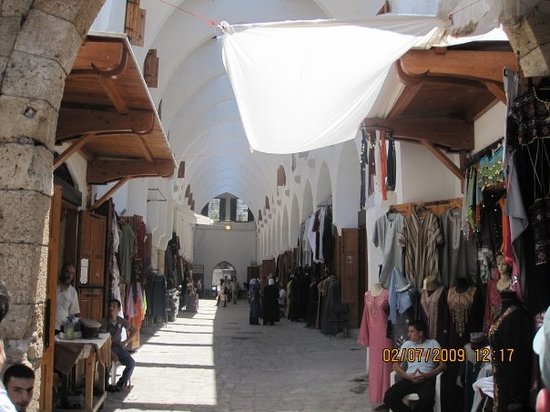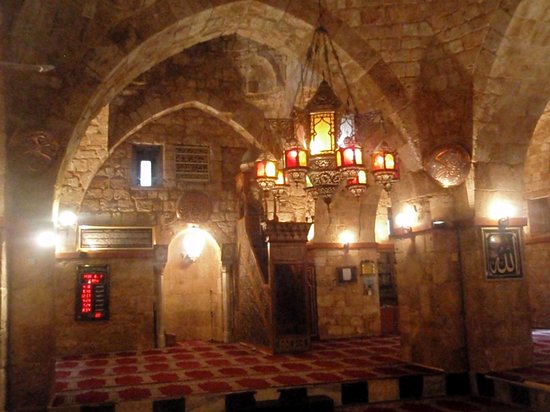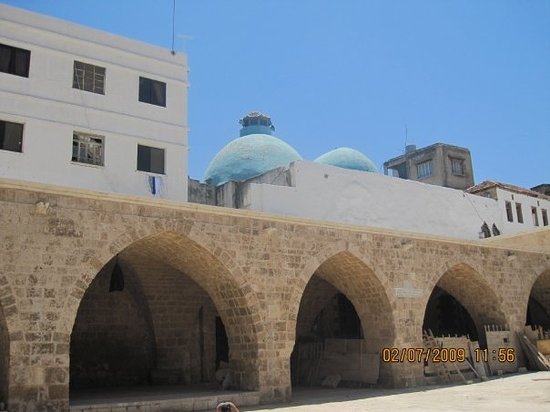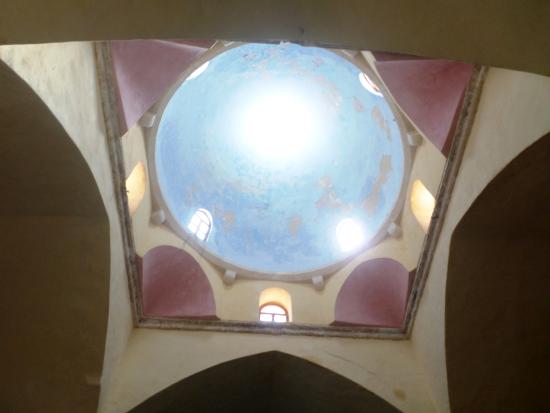Top 10 Things to do in Tripoli, Lebanon
Discover the best top things to do in Tripoli, Lebanon including Citadel Saint Gilles (Qal'at Sinjil), Khan Al-Khayyatin, Al-Mina Port, Taynal Mosque, The Great Mosque, The Clock Tower, Souk Al-Harajb, Ezzeddine Hammam, Al-Shoker Mosque, Al Burtasiyat Madrassa-Mosque.
Restaurants in Tripoli
1. Citadel Saint Gilles (Qal'at Sinjil)
Overall Ratings
4 based on 65 reviews
Reviewed By UNNIMAYA - Abu Dhabi UAE
Built at a vantage point offering a birds eye view of Tripoli, this crusader castle dating back to 1103 has currently a heavy military presence currently- however this should not bother you since they keep to themselves.
There are permanent exhibits in the castle which are worth visiting to understand the history associated with this monument. And of course there are plenty of photo opportunities.
You can spend about an hour of two visiting the castle and the nearby souk after parking your car in one of the paid manned private parking lots.
2. Khan Al-Khayyatin
Overall Ratings
4.5 based on 33 reviews
3. Al-Mina Port
4. Taynal Mosque
Overall Ratings
4.5 based on 21 reviews
Reviewed By Abdul Hamid M - Lebanon
I just love this historical mosque. It keeps glowing, it seems due to continuous maintenance. It's so beautiful, specially the interior, it's amazing and warm and gives high spiritual feeling. It's a must visit..
5. The Great Mosque
6. The Clock Tower
Overall Ratings
4.5 based on 22 reviews
Reviewed By Tony W - Sydney
The clock tower in Tripoli is A reminder of this city's history. Built during the reign of the Ottoman Empire it is an interesting artefact and well worth a photograph or two.
7. Souk Al-Harajb
Overall Ratings
4 based on 16 reviews
Reviewed By Sheri L - Carcassonne Center, France
Tripoli is a city that needs to grow on you as you explore deeper, further, wider, to come to terms with its character.
The new city has developed at a distance from the original heart of Tripoli - or perhaps, as it was explained to me by a student from the city, it is in fact three cities in one and its Greek name is therefore enduringly true today: tri (three) 'polis' (cities). Tarabulus, its name in Arabic. The Phoenicians knew it as Athar before that. Settlement dates back to 1400 BC.
Tripoli is considered to date to the 14th century BC. It boasts the largest Crusader fortress in Lebanon, the Citadel of Raymond de Saint-Gilles. Its Mamluk architecture is second only to Cairo.
There are few foreign visitors at present owing to regional security issues but it is worth travelling there at such a time. The locals helped me with directions, took me to the souk, to the coach terminal etc. as I was there during the municipal elections and there were few taxis.
8. Ezzeddine Hammam
Overall Ratings
4.5 based on 11 reviews
Reviewed By MarwaAD - Beirut
Tripoli's First Mamluke Hammam
A Hammam or bathhouse played a prominent role in the lives of people in the Muslim world for centuries. One could compare them to saunas in Hungary today, the public and private hammams of Istanbul, Aleppo, or Tunis used to fulfill an important role, which was reflected by the number of bathhouses in Oriental cities. Hammams were traditionally located near mosques for prayers to clean themselves and relax; they also played an important role as places for meeting others and developing social relations.
Hammam Ezzedine was the first hammam built in Mamluke Tripoli and remained the largest and most important one in the city. According to an article featured on Archnet.org, Ezzedine's bath follows very closely the pattern and arrangement of Syrian baths. For the practical purpose of saving and keeping heat, this bathhouse, like most hammams, is surrounded by buildings and is hardly visible from the outside; as was also then customary, the facade was kept plain.
Though no longer operational, Hammam Ezzedine in the Hadid district, near the Souk el-Nahhassin and the Khan al-Khayyatin is an impressive historical site that occupies a 745 square metre area and that has undergone extensive restoration.
You can visit this site where there is no entrance fee and there are numerous roll-up banners inside that would guide you regarding its history, architecture, and much more!
9. Al-Shoker Mosque
Overall Ratings
4.5 based on 3 reviews
10. Al Burtasiyat Madrassa-Mosque
Overall Ratings
4.5 based on 2 reviews
Reviewed By Sheri L - Carcassonne Center, France
I chanced upon this small and beautiful mosque-madrassa set in a garden on the west bank of the neglected Abou Au river just outside the Souk al Haraj and below the Citadel of Raymond de Saint Gilles.
Old men sat around the upper gate entrance and scowled at a Western woman seeking entry to the garden but I managed a couple of photographs and left the garden, crossing the river and looking back onto the little site. A very beautiful Mamluk entrance is well preserved.
According to sources: "Designed by an Andalusian architect, Prince Issa Bin Omar Al Bertasi Al Kerdi had the mosque and school constructed in the early 14th century. "
The garden is a tranquil haven and the river still flows below its wall even though the locals pile their trash on its banks.










